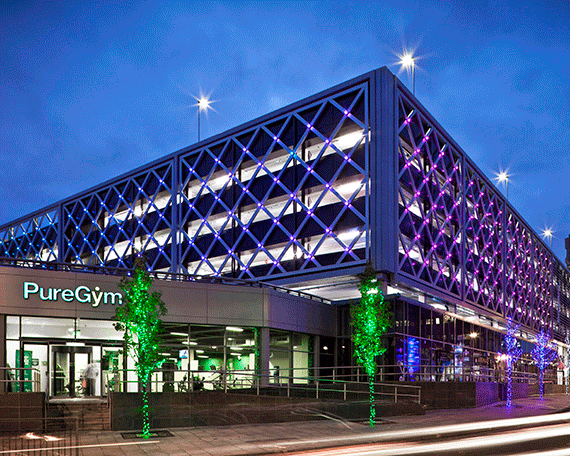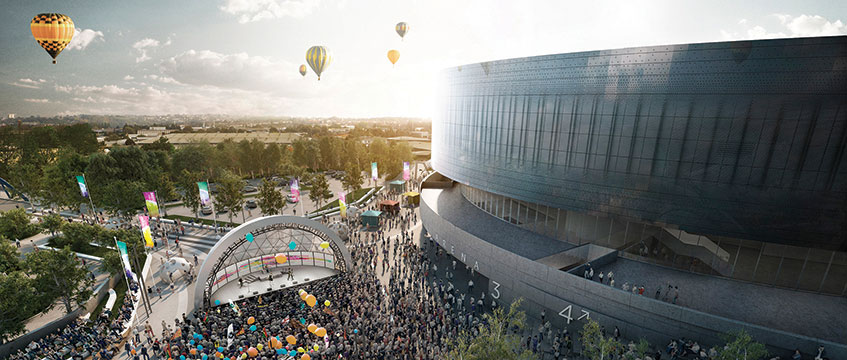Tuesday, 23 January is a crucial date for Bristol’s long-planned arena development. It’s the day a decision on where it will be located is expected.
Last year the city’s elected mayor Marvin Rees halted the plans for a 12,000-seat arena in the city centre while a “value for money” assessment on the £123m project was carried out.
Planning for the project has already been granted on a council-owned site at Temple Meads Enterprise Zone next to the mainline train station, and it was to be the centrepiece of the 173-acre regeneration project.
However, Filton Airfield, outside Bristol, has been touted as a potentially cheaper location.
The council has already spent £9m on the Temple Meads site and pre-construction work had started (see box, below).
Investors, developers and agents agree on one thing: Bristol needs an arena.
It is the only major UK city without one and to rub salt into the wound, Tim Davies, Colliers International’s head of the South West & Wales, reckons Bristol’s hotels are busiest when there is an event on at the Millennium Stadium in nearby Cardiff.
While the arena development is on pause, the University of Bristol announced it was going to invest £300m in a new campus at Temple Meads, a fillip for the project as it will bring not only students but staff and researchers to the area.
Does this eclipse the pulling power and regenerative effect of the arena and minimise the blow should the decision be made to locate it out of town? Some think so.
Legal & General bought 3 Glass Wharf, the 110,000 sq ft office in the enterprise zone which is let to the HMRC, and also has plans for 360 build-to-rent units.
Dan Batterton, fund manager, build-to-rent, Legal & General Investment Management, says the arena was proposed when the site for the BTR scheme was identified and it was a major plus point – and it still is.
However, he says the university offers more potential now.
“The number of people employed by the university outweighs the number employed by the arena,” he says.
Davies also believes the university is a coup, but he has concerns about the rest of the regeneration if the arena was to be built at Filton. He thinks it will slow down the pace of investment and development.
“It’s a strategic asset, the place it should be is right in the heart of the city centre,” he says.
Simon Peacock, lead director at JLL in Bristol, agrees and says the dithering over the decision is not helping investors.
“We need to make this decision and move on. If doesn’t happen, we move on, but it is damaging not knowing what is going on.”
While the university campus can only be a good thing, what the arena would bring is a more diverse footfall to the area, where plans also include retail, restaurants and bars (see Leeds Arena box, below).
But given how long it has taken to get to this point, there are those in the market who are sceptical that January 23 will prove to be a pivotal day in the arena’s story.
Davies says: “If the decision is made then you can phone me up and call me an idiot.”
The arena – a brief history
Bristol’s biggest venue is currently the 2,000-seat Colston Hall and there have been plans for an arena for at least three decades.
The last attempt collapsed in 2007 when costs spiralled, but plans have since been revived.
Funding was agreed for the project in 2014, then valued at £91m, and a design team was chosen in 2015.
In the same year, the council also purchased Arena Island, 1-9 Bath Road, and the former sorting office in Cattle Market Road, giving it ownership of the site for the scheme, plus neighbouring land.
Planning permission was granted in 2016 but pre-construction work was halted for the project, now thought to cost in the region of £123m, so that a value assessment by KPMG could be carried out.
Filton Airfield emerged as an alternative location, despite the council having already spent £9m on the Temple Meads site.
The council is due to decide on the location on 23 January.
What else would go on the arena site
With affordable housing such a big priority for mayor Marvin Rees, it is the obvious choice for the council-owned site, should the arena go to Filton.
It would add to the mix of tenure – private and build-to-rent are already planned within the enterprise zone.
Building a smaller arena at Temple Meads is another solution, with the residual land being used for affordable housing.
Could this be an easier option to swallow for the mayor?
Leeds Arena – the regenerative effect

The 13,500-capacity Leeds Arena opened in 2013 after the council took a decision to develop the scheme itself on a site to the north of the city centre. Five years later what impact has it had on the once overlooked part of the city?
JLL’s Jeff Pearey says: “All the times I’ve been there, there is a swarm of people walking from the city centre in a northerly direction and that helps restaurants and bars and it has certainly had a positive impact on the retail in that area.
“There has been a percolation of improving land use and improvement in dwell-time offer. If you look at some of the buildings and land use before the arena arrived it would be very different to how it is today.”
To send feedback, e-mail stacey.meadwell@egi.co.uk or tweet @EGStaceyM or @estatesgazette











